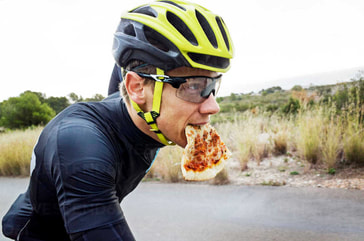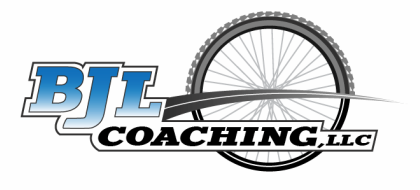 Just like we train with specificity to best meet the demands of our events, we should also fuel with specificity. What does this mean? Event day is NOT the time to experiment with new energy and hydration sources. We want to have fun and perform well, not be dealing with gastrointestinal distress. Or perhaps it’s a mix that doesn’t bother our gut, but tastes so terrible you have no desire to drink it. While a fun farm to fork fondo type of event might be more forgiving if you’re riding casually, you still don’t want gut issues. How can this be avoided? (Nutrition? Fueling? See: Fueling vs. Nutrition) If you’re providing all your own fueling for the event, start dialing in what you’re going to eat and drink at least 8 weeks out from the event. Practice with this fuel on different training rides, especially rides that replicate part or all of the event. Can you open up the food when going hard? Does it take forever to chew (which can be good or bad, actually)? Is it fine at an endurance pace but as soon as things heat up your stomach revolts? Does it taste pretty good 2 hours in but after 6 hours in you’re tired of it? All things to think about that can be investigated through deliberate practice. If some or all of the refueling will be provided by the neutral support at the event, make sure you find out EXACTLY what will be offered. If not clearly outlined on the registration page, find out directly from the promoter, not what your buddy that did it 5 years ago remembered. If you’ve used their products successfully before, GREAT. If you’ve never tried them, go get yourself some and practice as I wrote about above. Obviously if you’ve used and it didn’t sit well with you or just wasn’t effective for you, you're going to want to carry your own fuel and, if available, have your drop bags stocked up. I had a teammate that could not stand what one of the big endurance mountain bike events in our area had in the hydration jugs at the aid stations. Instead of using what they offered, he would carry small plastic bags of the drink mix that worked for him, and then just add water at the aid stations. Slower at the aid stations? Maybe, but better than the time you may lose from not drinking during a super-hot race of 8+ hour duration. For either situation, try to practice under similar environmental conditions, as something that sits well at 40 degree Fahrenheit might be a gut bomb at the 95 degree venue. Try these foods and drinks on the trainer when you’re really cooking as we all know it’s easy to get hot riding indoors. Or maybe the bar or waffle that’s soft and chewy at home turns into a brick at the frigid event. Obviously the different conditions are not always available, but something to consider. Even if you’ve got your plan dialed in and find “your products,” I encourage you to continue to experiment and try other things. The wider the range of products that you know work for you the better. You’ll make yourself much more versatile lower maintenance with the flexibility. You also may find that a new product came out that works better for you, or you’ve changed with time and respond better to something else. Buying box of bars or jugs of mix that you might not like can get expensive, with a little creativity you can save some dough. You can make trades with riding partners, buy singles at your local bike shop, or check out The Feed. I’m not sponsored by The Feed or anything of the like, I just simply know that some of my clients have enjoyed purchasing samplers to figure out what they like and what works. www.thefeed.com While you're experimenting, also work on the amount of the fuel that you're taking in. Are you getting enough calories (energy)? Can you push it up to 60 grams per hour? 70? 80? Find what works for you, but also be ready to adapt the plan based on the duration and intensity of the event. I can help you dial in your plan and find a good range that works for you. I had some teammates who could race up to 10 hours with all liquid based calories. And others, like me, that needed and preferred a mix of liquid and solid calories. Find what works for you and keep in mind that different durations may yield different “optimal” plans for you. Here are two solid resources to help you get DIALED: https://www.trainingpeaks.com/blog/how-to-optimize-carbohydrate-absorption/ https://cyclingmagazine.ca/sections/training-guide/training/pro-cyclists-share-their-race-day-nutrition-plans/ As always, find what works for YOU! So keep practicing and leave as little to chance on event day as possible, especially not what’s going to keep your turbo diesel engine humming along! What are your best practices for fueling during your event? Post these or any questions below. Fuel like a champ! Coach Brian
0 Comments
Your comment will be posted after it is approved.
Leave a Reply. |
Categories
All
Coach B.L.Coach B.L. is the head coach at BJL Coaching and an avid racer and cycling enthusiast himself. Archives
July 2024
|

 RSS Feed
RSS Feed